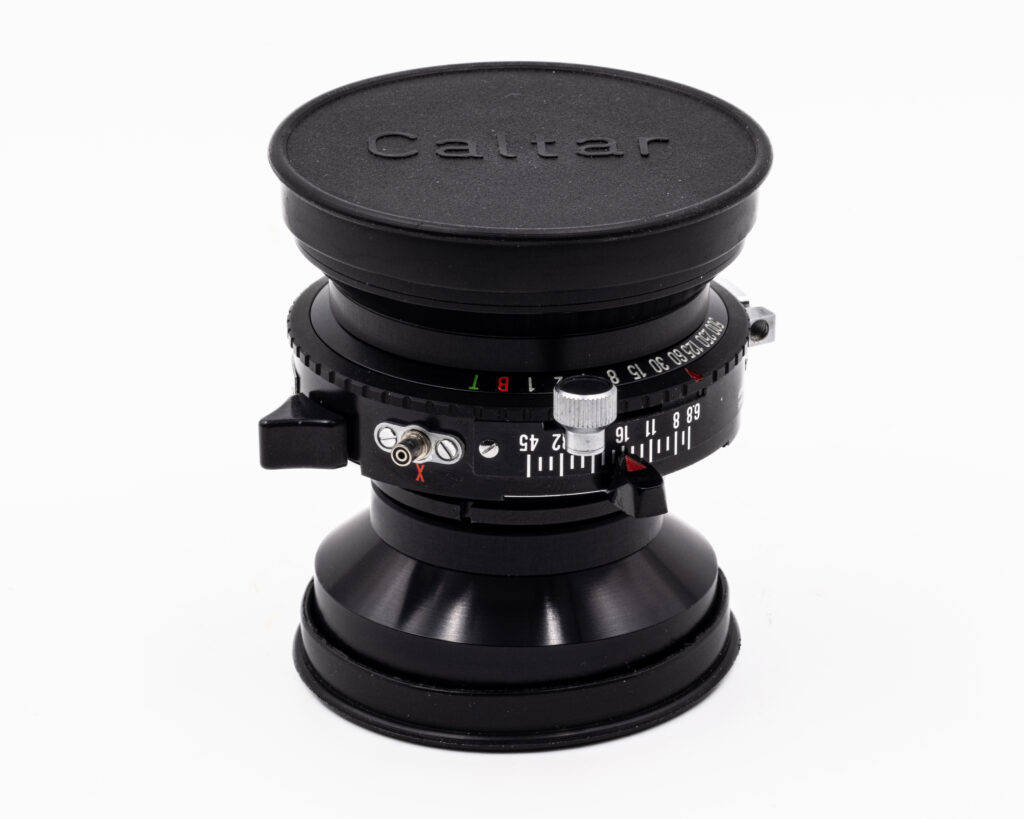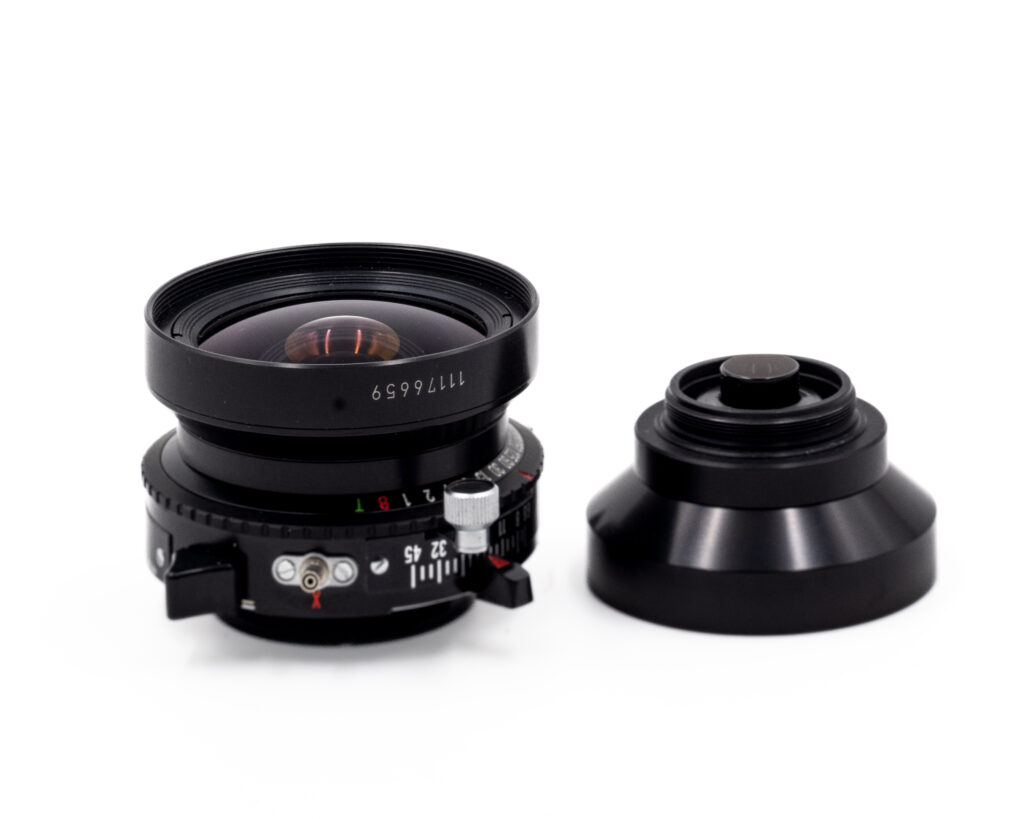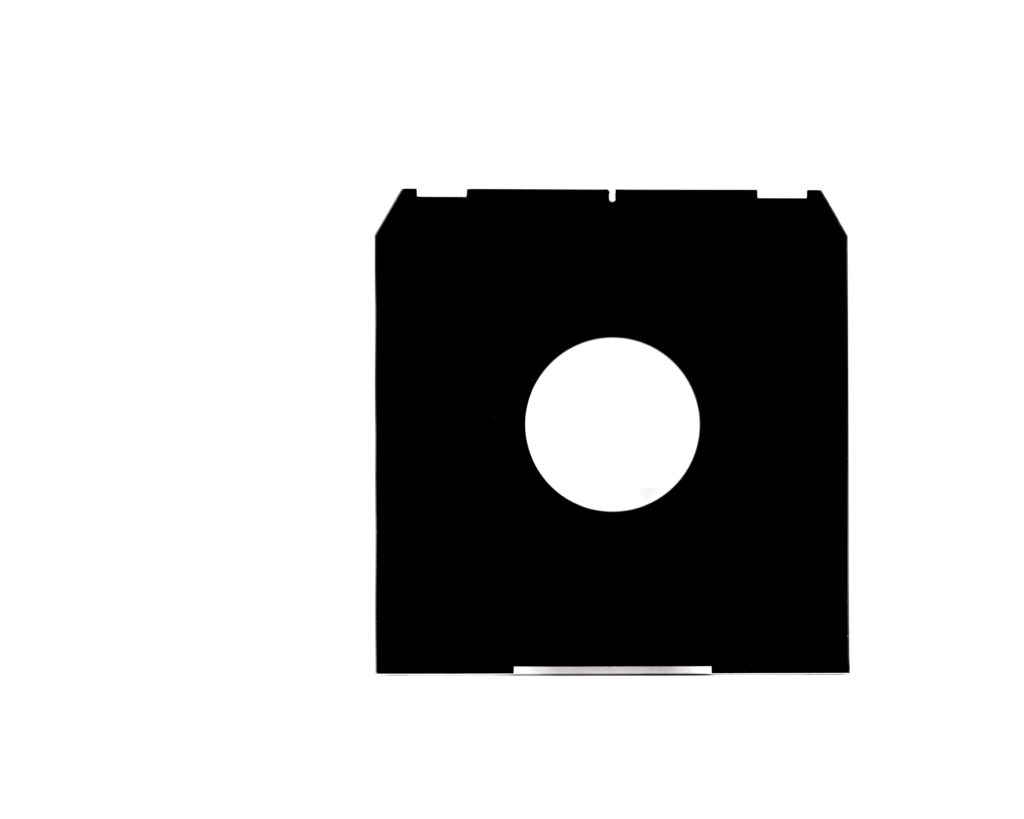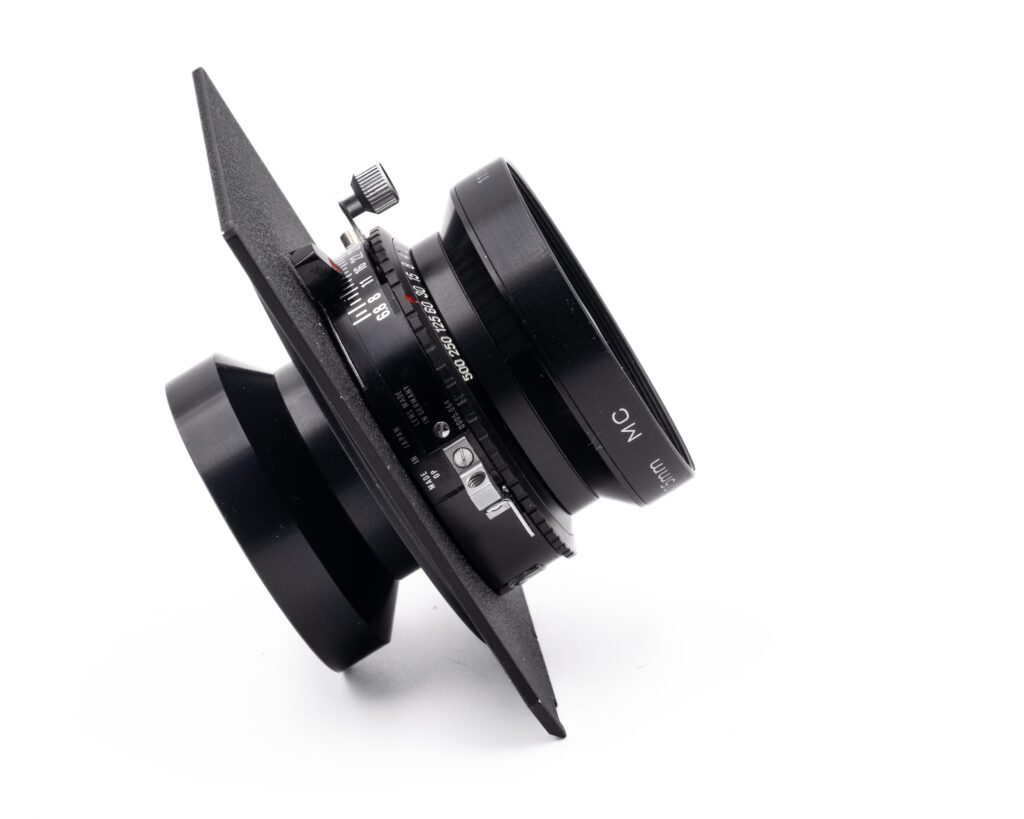One of the outcomes of previous Fujifilm View Camera Adapter G tests was to observe the zooming effect of the adapter. My analysis indicated that the effect was equivalent to the addition of about 61.7mm, which corresponds to the distance back from the film plane that is the digital plane. This makes a 150mm lens the equivalent of about a 211.7 mm lens or about 61mm on a full-frame camera.
I tend to shoot a little wider, especially for landscapes. I have a large format 75mm lens, which is equivalent to about a 22mm lens on a full frame camera, but even with a 21mm recessed lens board, using the View Camera Adapter, I can’t compress the bellows enough to get in focus. This is shown by the mathematics outlined below1. As near as I can calculate, using a recessed lens board I can go as short as about a 105.7mm lens. But practically speaking, that would leave little room for movement.
However, there is another partial solution. Large Format Lenses are actually in two parts, that screw together. Between these two parts is the lens board, which is used to hold the lens on the front of the camera.




It turns out that the two parts of the lens, at least for the lenses I have, are interchangeable. So, that means I can use the back element of the 150mm on the 75mm lens, which gives me enough room in the bellows to focus and achieve an effectively smaller focal length, albeit nowhere near 75mm, and a softer image.

- Calculations to estimate the shortest focal length my camera will support.
The fundamental constraint is the minimum bellows compression. The specifications for my 4×5 camera states that to be 65mm. This physical limitation constrains the minimum focal length of lens the camera can support.
For a lens to focus, its Flange Focal Distance (f) needs to be greater than the minimum bellows compression. Using the film back, I am able to use the 75mm lens. However, attaching the adapter moves the sensor plane back distance (e), 61.7mm. In order for a lens to reach that plane, the lens board needs to be moved back distance (e), 61.7mm, which it cannot do, because the bellows cannot compress enough.
The formula to calculate the minimum focal length lens is: (e) + Minimum Bellows Compression, or 61.7 + 65 = 126.7mm. Using a recessed lens board can reduce that number. For example, a 21mm recess reduces the minimum focal length to 105.7 (i.e., 126.7 – 21).
↩︎


Leave a Reply